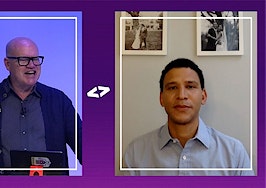If you’d like to catch a video replay of this Connect Now session, and access the other 25+ hours of video content from Connect Now, tickets are still available. Click here to access.
Roughly 10-15 years ago, the average real estate brokerage didn’t have to worry about the top producing agent, closing hundreds of millions in sales, because all business was flowing through the brokerage. But with the rise of direct-to-consumer real estate agents, Guy Gal, the CEO of Side, saw the need for a new type of real estate brokerage.
Side, Gal explained at Inman Connect Now, was founded to focus solely on the top producing agents, those closing more than 40 transactions, who are not well served by the current real estate brokerages in the industry.
“Existing brokerages are designed for the average agent,” Gal said. “The industry needed a brokerage platform that was specifically designed for top agents and teams.”
“Every other brokerage is designed for those agents doing four deals.”
The incumbents in the real estate industry actually don’t have an incentive to want top teams and agents, Gal explained, which moderator Clelia Warburg Peters, the president of Warburg Realty and a member of Side’s board of directors, pushed back on slightly. Gal explained that an agent doing $40 million in sales can renegotiate their splits so when they hit $80 million in sales, they are paying their brokerages the same amount of commission, despite the brokerage doing more work.
Gal, the CEO, doesn’t have a background in real estate. Despite boasting at Inman Connect Now that Side is more of a technology company than any other company in real estate, Gal doesn’t call Side a technology company.
“It’s really easy to market that, to say we’re a technology company now, or we’re a tech-enabled or whatever,” Gal told Warburg Peters.
“That’s in large part why we don’t approach things in that way,” Gal added. “We do not say we’re a technology company, even though we’re more a technology company than any other company in real estate, it’s not even close.”
Rather, what makes Side special is its ability to support agents and top teams, Gal explained. Side lets teams and agents take the consumer-facing and brand lead, while supporting their technology and backend.
Side isn’t building things like customer relationship management (CRM) tools, but rather tools that fill in the gaps left by other solutions on the market.
“We don’t build CRM, we license CRM because it’s better to license a CRM from a company that spent $100 million in building something best in class, then it is to hack something together that’s really buggy when something great already exists out there,” Gal said. “We focus on building in the places that nobody has built before.”
“It’s about shifting time back to [agents], allowing them to be more productive, do more business. And it’s about providing them with a service that helps them grow their income more predictably,” Gal added. “Ultimately, it’s about creating a community that’s exclusive and qualitative because it’s all highly experienced people.”
The promise of being technology solutions to help take the load of back-office or administrative tasks away from agents, sounds similar to many of the promises made by Compass, another growing upstart brokerage that came into the space to challenge incumbents. It’s a comparison Warburg Peters made, which Gal immediately dismissed.
The average agent at Compass only completes between five and seven transactions per year, Gal said, while at Side, agents complete more than 40 transactions on average.
“That’s not even in the same ballpark; it’s a different sport that’s being played,” Gal said.
Side is also not a front-facing brand, whereas Compass is building a brand as a real estate brokerage. Compass is more like Coldwell Banker, than it is Side, Guy explained.
If you’d like to catch a video replay of this Connect Now session, and access the other 25+ hours of video content from Connect Now, tickets are still available. Click here to access.









